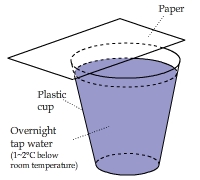 |
| Figure 1 |
With the releases of two competitively priced IR cameras for smartphones, the year 2014 has become a milestone for IR imaging. Early in 2014, FLIR unveiled the $349
FLIR ONE, the first IR camera that can be attached to an iPhone. Months later, a startup company
Seek Thermal released a $199 IR camera that has an even higher resolution and is attachable to most smartphones. In addition, another company
Therm-App released an Android mobile thermal camera that specializes in long-range night vision and high-resolution thermography, priced at $1,600. The race is on... Into 2015, FLIR announced a new version of FLIR ONE that supports both Android and iOS and will probably be even more aggressively priced.
 |
| Figure 2 |
All these game changers can take impressive IR images just like taking conventional photos and record IR videos just like recording conventional videos, and then share them online through an app. The companies also provide a software developers kit (SDK) for a third party to create apps linked to their cameras. Excited by these new developments, researchers at several Swedish universities and I have embarked an international collaboration towards the vision that IR cameras will one day become as
necessary as microscopes in science labs.
 |
| Figure3 |
To test these new IR cameras, I did
an easy-to-do experiment (Figure 1) that shows a paradoxical warming effect on a piece of paper placed on top of a cup of (slightly cooler than) room-temperature water. This seemingly simple experiment actually leads to very deep science at the molecular level, as
blogged before.
I took images using FLIR ONE (Figure 2) and SEEK (Figure 3), respectively. These images are shown to the right for comparison. As you can see, both cameras are sensitive enough to capture the small temperature rise caused by water absorption and condensation underside the paper.
The FLIR ONE has a nice feature that contextualizes the false-color IR image by overlaying it on top of the
edges (where brightness changes sharply) of the true-color image taken at the same time by the conventional camera of the smartphone. With this feature, you can see the sharp edges of the paper in Figure 2.



